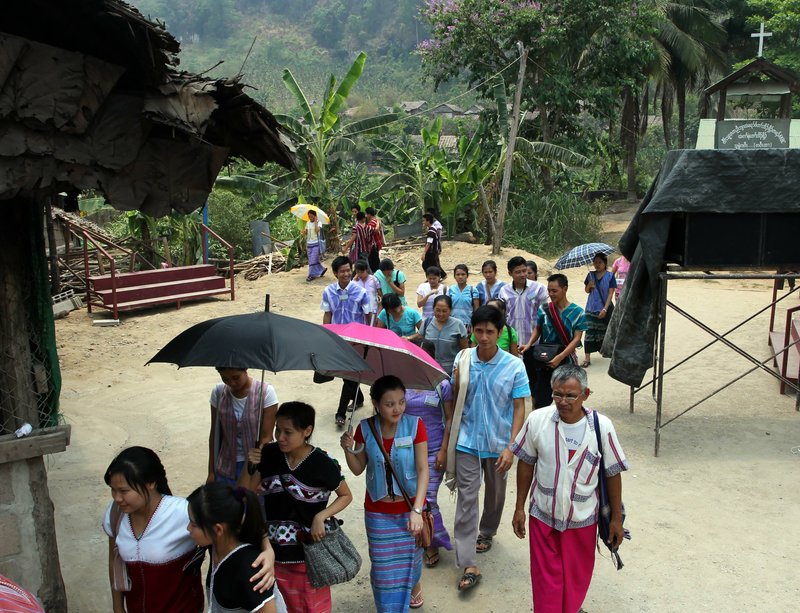MAE LA REFUGEE CAMP, Thailand — Since the day she was born, 20-year-old Naw Lawnadoo has known almost nothing of the world beyond the fence and guard posts that hem her in with 45,000 others — ethnic minorities from Myanmar and those like her who were born and raised in the Mae La refugee camp in neighboring Thailand.
School, family, friends, shopping and churchgoing — many of the refugees are Christian — have all been confined to a valley of densely packed bamboo-and-thatch huts huddled under soaring limestone cliffs.
Now, she and other camp residents face a future that will dramatically change their constricted but secure, sometimes happy lives. With the end of 50 years of military rule in Myanmar, aid groups are beginning to prepare for the eventual return of one of the world's largest refugee populations — some 1 million people in camps and hideouts spread across five countries.
For thousands like Naw Lawnadoo, it is "repatriation" to a country they have never known, where their parents suffered under a military regime that suppressed ethnic insurgencies with brutal tactics, and where ethnic tensions continue to erupt in bloodshed despite some democratic reforms. More than half the population of the camps in Thailand is under 19.
"We are prepared to go back, but we don't know what the real situation there is like," says Naw Lawnadoo of the country previously known as Burma. "We can't speak Burmese. We have no identification cards. And I don't know what kind of a job I could get."
Just when they will have to leave remains uncertain, but Thailand, which hosts many of the camps, is eager to close them.
"We're coming to the endgame," says Sally Thompson, executive director of The Border Consortium, the main agency providing aid to a string of Thailand camps, where you can find four generations living under one roof.
Some may melt into Thailand, joining the 2.5 million migrant workers from Myanmar. A few may be resettled in third countries, though the United States is ending a program under which it has taken 80 percent of the 105,000 settled so far. With shrinking options, most will likely have no choice but to return.
